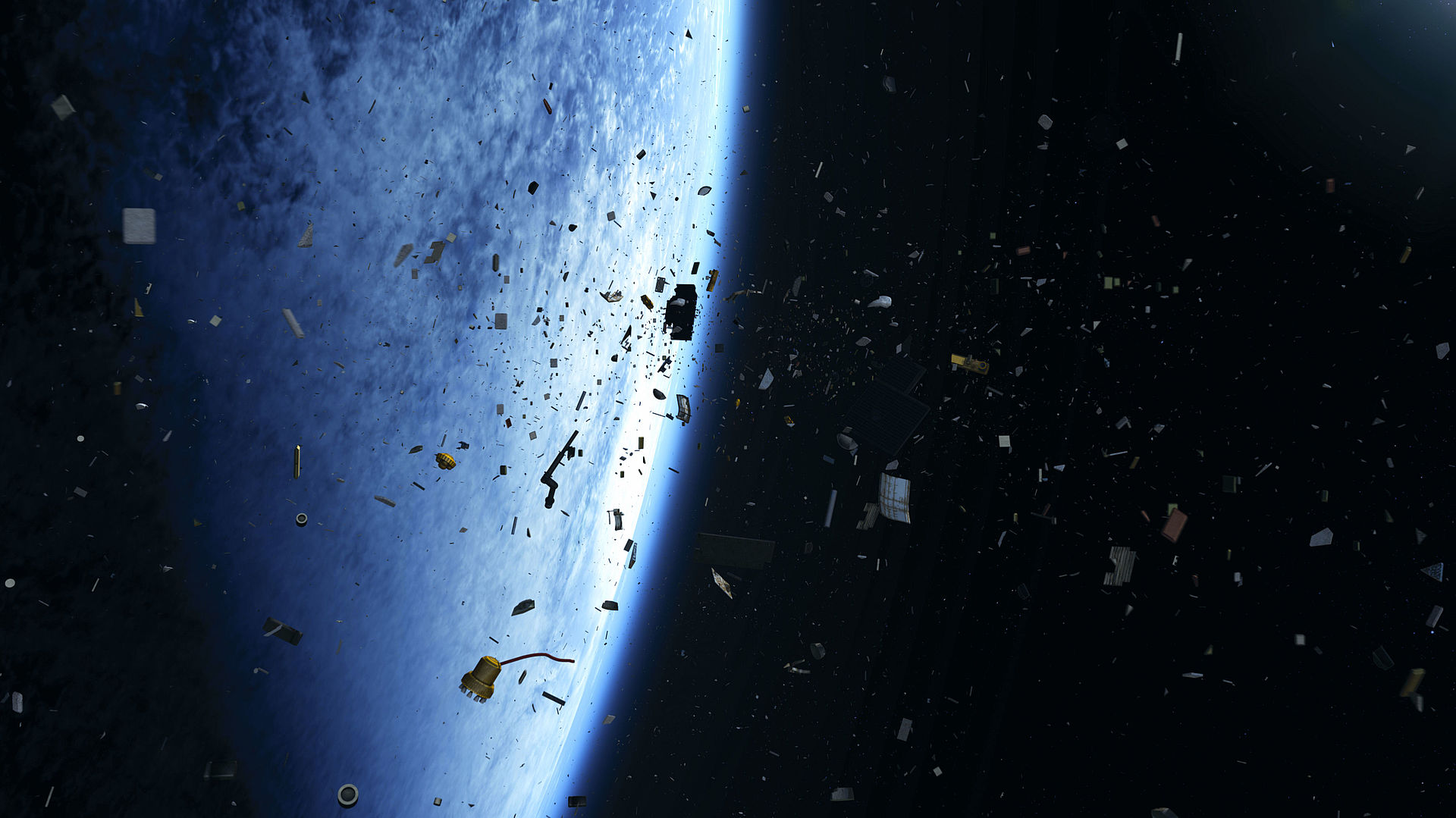The Space Debris Center of Competence at OHB offers support with its experience and analyses for the reduction of space debris. In a brief interview, Dr. Charlotte Bewick, the coordinator of the Space Debris Center, talks about the hazards posed by space debris for spacecraft and humans and the contribution OHB is making to reducing it.
Space junk – why do we even care about it? Isn’t it far enough away?
Space debris, human made junk in orbit, can pose a great hazard because the particles could hit astronauts, satellites and other spacecraft and damage them.
How much junk is floating around up there?
There are certain orbits that are quite contaminated. Especially at altitudes of 700 to 800 kilometers, where there is hardly any atmosphere to low down orbiting objects. This means that satellites and fragments remain at these heights for hundreds or even thousands of years. At the same time, many satellites are located in this area, as it is particularly useful for Earth observation missions. Below 400 km, scrap particles burn up within a few years when they enter the Earth’s atmosphere.
What are the options for eliminating space debris?
You can ensure a uncontrolled re-entry into the Earth’s atmosphere by either constructing the satellite in such a way that it enters and burns up in the earth’s atmosphere virtually by itself at the end of its life, or you can perform a special manoeuver. At the Space Debris Center, we advise OHB’s project teams on how certain guidelines can be adhered to in satellite production in order to prevent even more space debris from being generated by our satellites.
So there are rules that can be followed to avoid space debris? Explain ...
Of course, there is ISO 24113 and the standard of the European Cooperation for Space Standardization (ECSS). The rules set out the ISO standard are effectively our 10 commandments and define the primary requirements for the avoidance of space debris. The ISO standard also states that satellites in low earth orbits are only allowed to stay in orbit for 25 years.
Do you also know the places where there is a lot of debris so that satellites assembled by OHB can avoid it?
There is, for example, DISCOS, the space debris database of the European Space Agency ESA. And the amount of space debris is growing all the time. It would be nothing short of a catastrophe if we were no longer able to launch any missions into orbit because of all this scrap since we would then lack important knowledge and life on earth would no longer be imaginable without satellite technology.
Catastrophes? Oh dear! Have there been any yet? Any crashes in space?
Unfortunately, there have. The collision of the Kosmos 2251 and Iridum 33 communication satellites almost exactly ten years ago at an altitude of almost 800 kilometers is particularly well know. The speed at which the two satellites had been traveling caused a huge cloud of dust with more than 100,000 individual pieces when they collided.
Spectacular! Have there been any other similar events in the past?
We also know that China deliberately launched a defective Chinese Fengyun series weather satellite to show that they were able to do so. Using a rocket, the Chinese destroyed the satellite in 2007 from the ground, breaking it up into over 40,000 pieces of debris that were thrown into various orbits.


